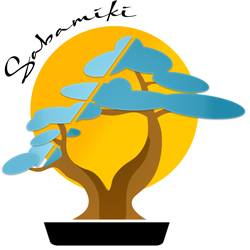Sabamiki Style: The Hollow-Trunk Bonsai
Definition and Origins

The Sabamiki style, or "hollow-trunk style," represents a unique and artistic aspect in the art of bonsai. This style mimics the appearance of ancient or damaged trees that have been affected by natural elements, such as lightning or rot, leaving cavities or hollows in the trunk.
Distinctive Characteristics
- Hollowed or Carved Trunk: The main feature of the Sabamiki style is the hollowed, carved, or split trunk, giving the impression of a tree that has survived significant damage.
- Aged and Survivor Appearance: The Sabamiki style evokes a sense of resilience and antiquity, illustrating the tree's ability to survive and thrive despite injuries.
- Natural Branching: Branches emerge from the damaged trunk naturally, often with denser growth around the healthy parts of the trunk.
- Trunk Texture and Color: The texture of the hollowed trunk is often rough and irregular, with varied colors to accentuate the hollows and cavities.
- Pot and Presentation: The pot for a Sabamiki bonsai is generally chosen to complement the robust and aged appearance of the tree, often with earthy or neutral tones.
Species Selection
Species with robust and thick trunks, such as pines, oaks, and maples, are well-suited for the Sabamiki style. These trees can withstand trunk hollowing without compromising their overall health.
Maintenance and Cultivation Techniques
- Creation and Maintenance of the Hollowed Trunk: Creating a Sabamiki trunk may require advanced techniques, including hollowing and carving of the trunk. Maintaining the health of the tree around the damaged area is crucial.
- Pruning and Pinching: Pruning is used to maintain the visual balance of the tree and to encourage harmonious branching around the hollowed parts.
- Repotting and Substrate: A well-draining substrate is important, as are regular repottings to ensure the health of the tree despite the hollowed trunk.
Conclusion
The Sabamiki style is a dramatic and expressive representation in the art of bonsai, capturing the essence of survival and perseverance. These trees offer a window into time and natural challenges, showing how beauty and strength can emerge from trials.

















